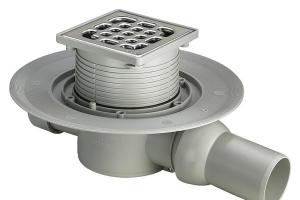How to remove an airlock from a heating system: 4 scenarios and 4 solutions
In this article I am going to talk about how to remove air from the heating system. Since the heating circuit can have various configurations and be responsible for heating an apartment or private house, the reader and I will have to get acquainted with several solutions of varying complexity.
Why is it needed
Apartment house
I'll start from afar.
In order for the batteries to be heated on all floors and in all apartments, they must circulate continuously.
As a rule, ordinary water plays this role in an apartment building.
The pressure drop between the heating mains (supply and return) in normal mode is at least 2 kgf/cm2. However, hot water from the supply enters the heating circuit not directly from the heating main, but after mixing with water from the return. A water-jet elevator is responsible for preparing the mixture - a cast-iron or steel tee with a nozzle placed inside.
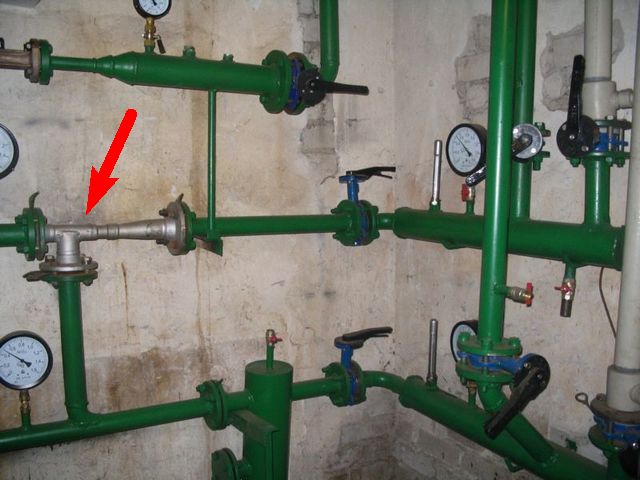
The water jet elevator is the heart of the home heating system.
Recirculation of a part of the coolant ensures the maximum speed of its movement in the circuit and the minimum temperature spread between the first and last heaters in the direction of water movement.
The pressure difference between the mixture entering the batteries and the return is much less than between the heating mains: it is only 0.2 kgf / cm2, which corresponds to a water column head of two meters. Air in the heating system simply will not allow water to circulate: such a small difference will not be able to squeeze the air plug down due to the significant difference in density between air and water.
To remove the air lock, the hydraulic pressure in meters must exceed the height of the circuit (in an apartment building - the height of the risers from filling).
Autonomous circuit
An autonomous heating system with forced circulation of the coolant has a different picture. In most cases, the pressure created by the circulation pump exceeds the height of the circuit, and it may well work even if there is air in the pipes.
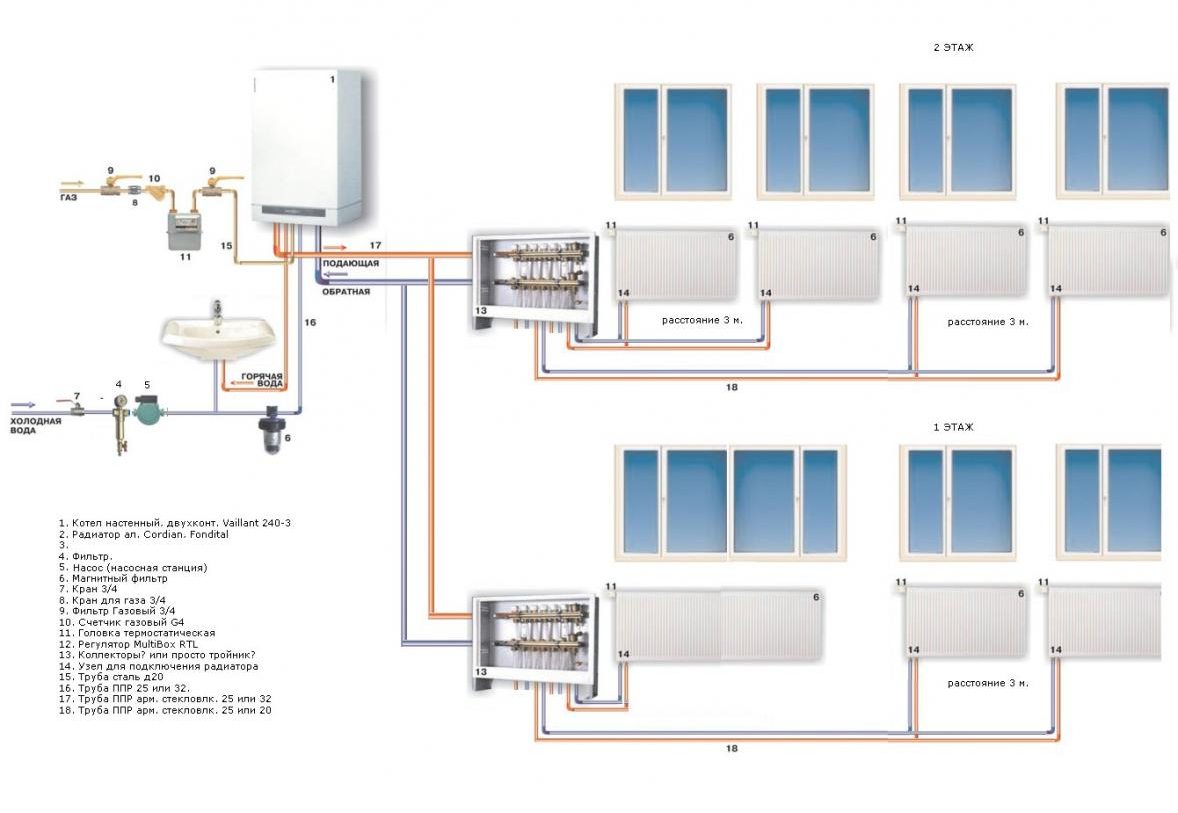
Heating scheme for a two-story house. The maximum height difference is about 4 meters.
However, when air bubbles move in pipes and radiators, hydraulic noise will inevitably occur. It is unlikely that the owner will be pleased with the gurgling sounds continuously coming from the battery.
In addition, air contributes to the corrosion of steel circuit elements - black steel pipes, steel panel radiators and bimetallic battery cores. In the absence of oxygen, contact with water does not lead to rust..
Where does air come from
Here are the main reasons for the formation of an air lock:
- Replacement of heating devices in apartments. It is carried out mainly in the summer, outside the heating season. After pressure testing, the riser is simply filled with water, and the air bleed from it is safely left for the fall;
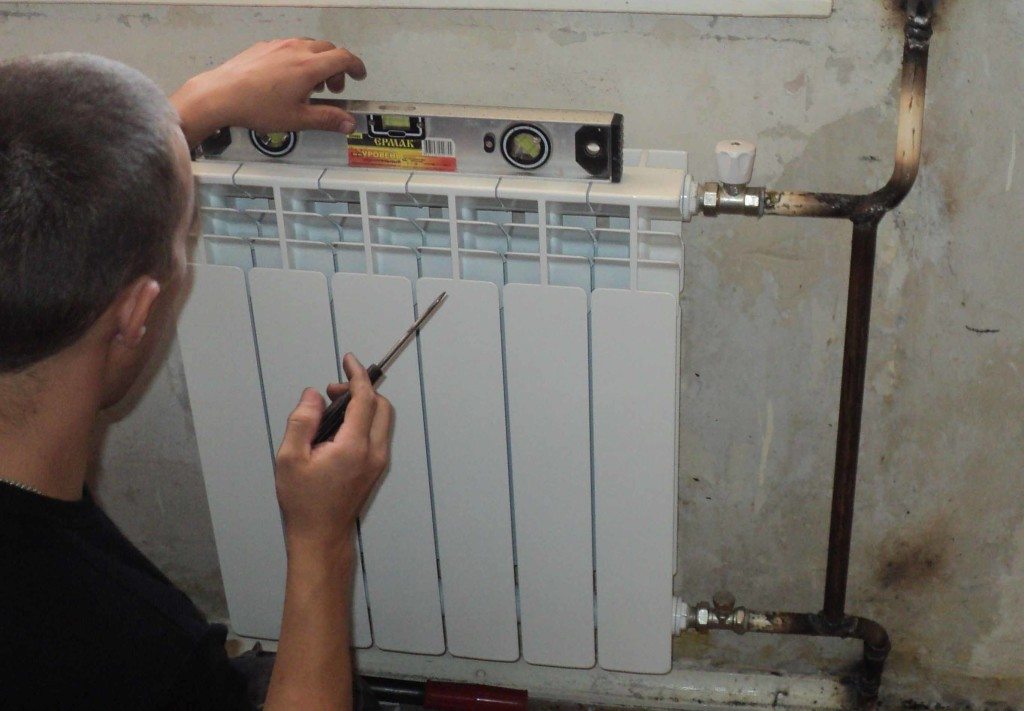
- Revision of shut-off valves on risers. It is associated with the need for complete drainage of the heating circuit;
- Revision of shut-off valves in the elevator unit. And in this case, the heating circuit is completely reset;
- Leakage of water through threaded connections with broken tightness, intersections of radiators, valve seals, fistulas in pipes, etc. With closed and serviceable gate valves in the elevator, they lead to a gradual pressure drop in the circuit. It is worth opening a flusher or a Mayevsky tap on one of the upper floors - and the vacuum that has arisen in the upper part of the circuit will suck in air.
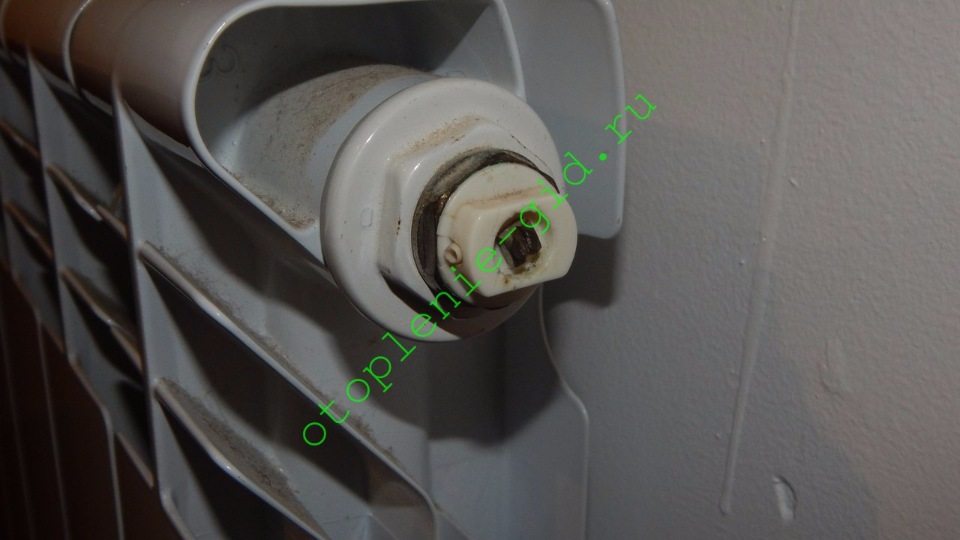
Scenario 1: apartment building, bottom filling
The bottom pouring scheme is the most typical solution for modern-built houses. Both return and supply pipelines are located in the basement. The risers connected to the bottling are connected in pairs (supply with return) by a jumper on the top floor or in the attic.
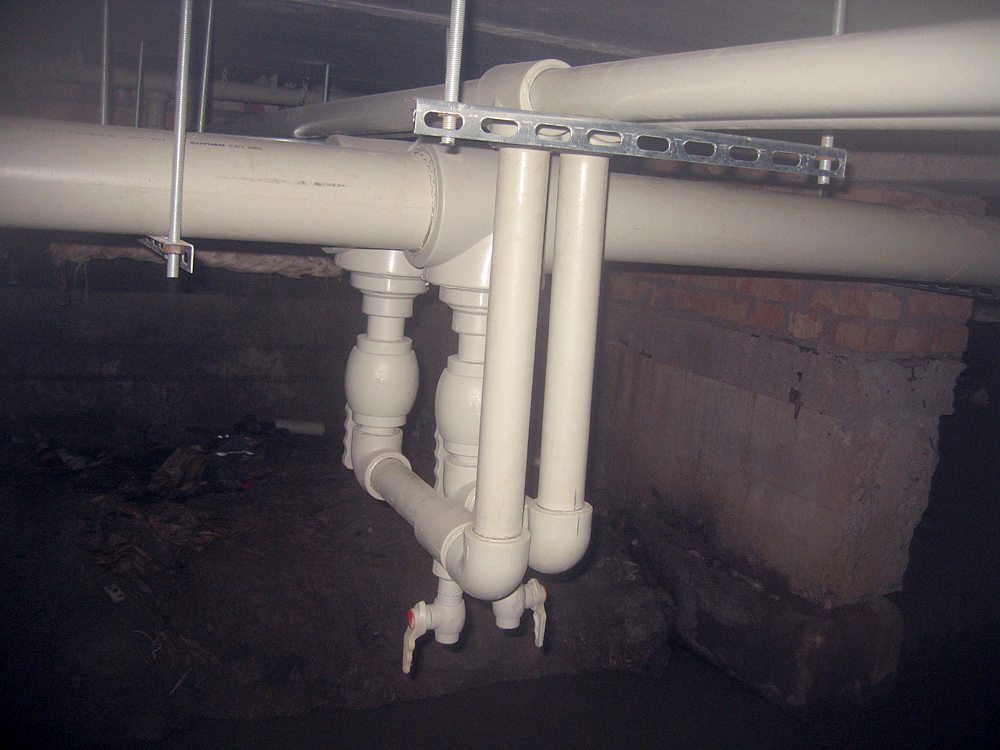
Solution 1: run the elevator to reset
Removal of air from the heating system is carried out by housing and communal services workers at the stage of launching a fully or partially discharged circuit.
To do this, it is bypassed to reset:
- One of the house valves opens, the second remains closed;
- In front of the closed valve on the side of the heating circuit, a vent connected to the sewer opens.
The release of most of the air is evidenced by a uniform, without air bubbles, water flow in the discharge.
Solution 2: air vents
At the top point of each pair of risers (in the radiator plug or on the jumper brought under the ceiling) in bottom filling systems, an air vent is always mounted. This is not necessarily a Mayevsky faucet designed specifically for bleeding air: it can be successfully replaced by a ball valve, a screw valve or a tap installed with a spout up.
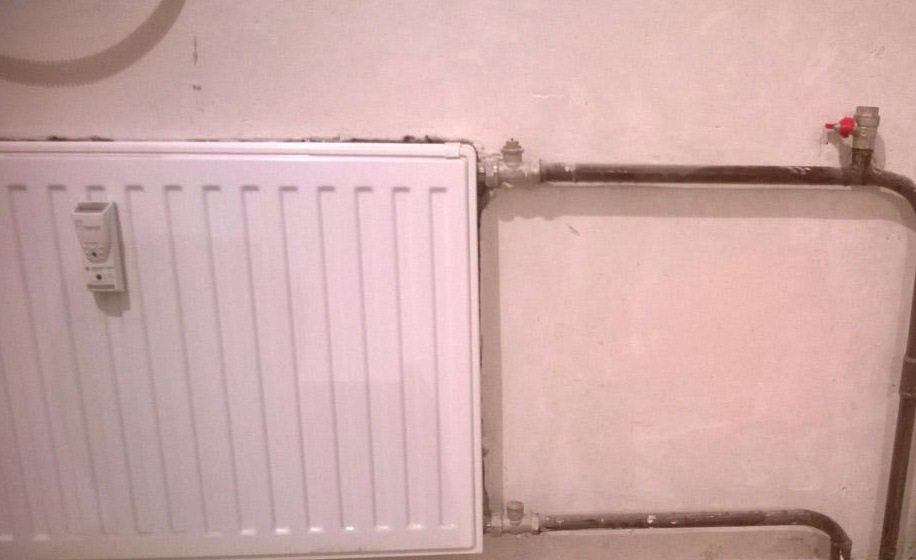
The air outlet from the riser looks like this:
- Open the valve slightly (no more than one turn). You should hear the hiss of escaping air;
- Substitute any wide dishes under it. A basin or bucket will save you from having to wipe a puddle on the floor;
- Wait until the air is replaced by water;
- Close the faucet. The riser should heat up within 5-10 minutes. If this does not happen, bleed the air again: it is possible that the circulation that has begun has expelled new air bubbles to the upper point of the circuit section.
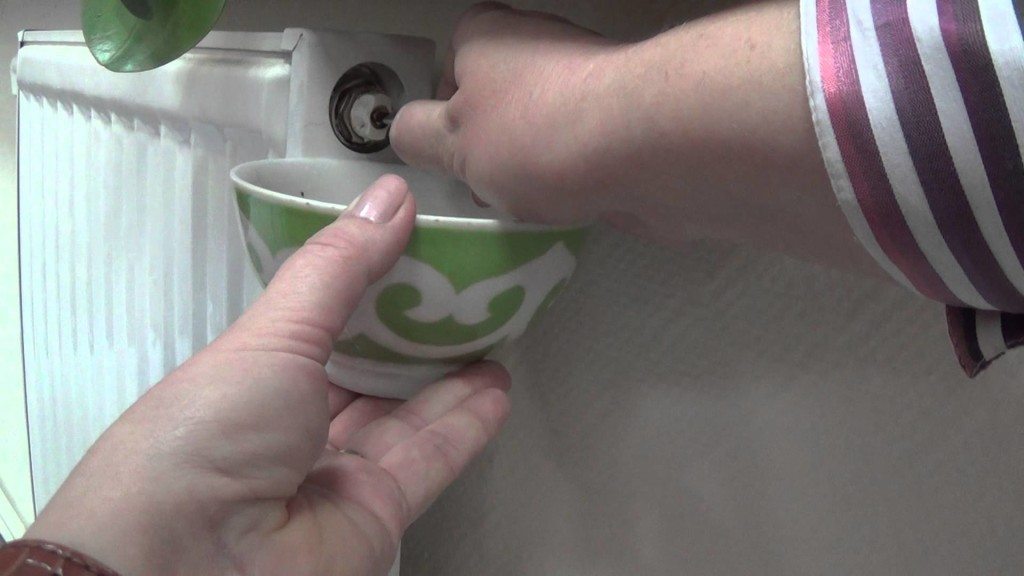
A few important points:
- Never unscrew the screw in the Mayevsky crane completely. With a pressure of 5-6 atmospheres and boiling water whipping from the hole, you don’t have the slightest chance to screw it back in. The consequence of rash actions will be the flooding of your apartment and apartments under you with hot and dirty water;
- Do not unscrew the air vent itself under pressure. Even half a turn: you don't know what condition its thread is in. If the drain valve for heating is faulty, before repairing or replacing it, it is necessary to shut off both paired risers and make sure that the valves on them hold water;
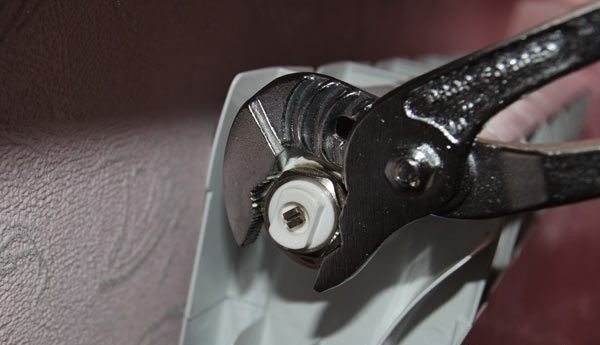
- If you live on the top floor, make sure you have something to open the air vent before the heating season starts. Modern Mayevsky taps are opened with their own hands or with a screwdriver, but in old houses you may need a special key;
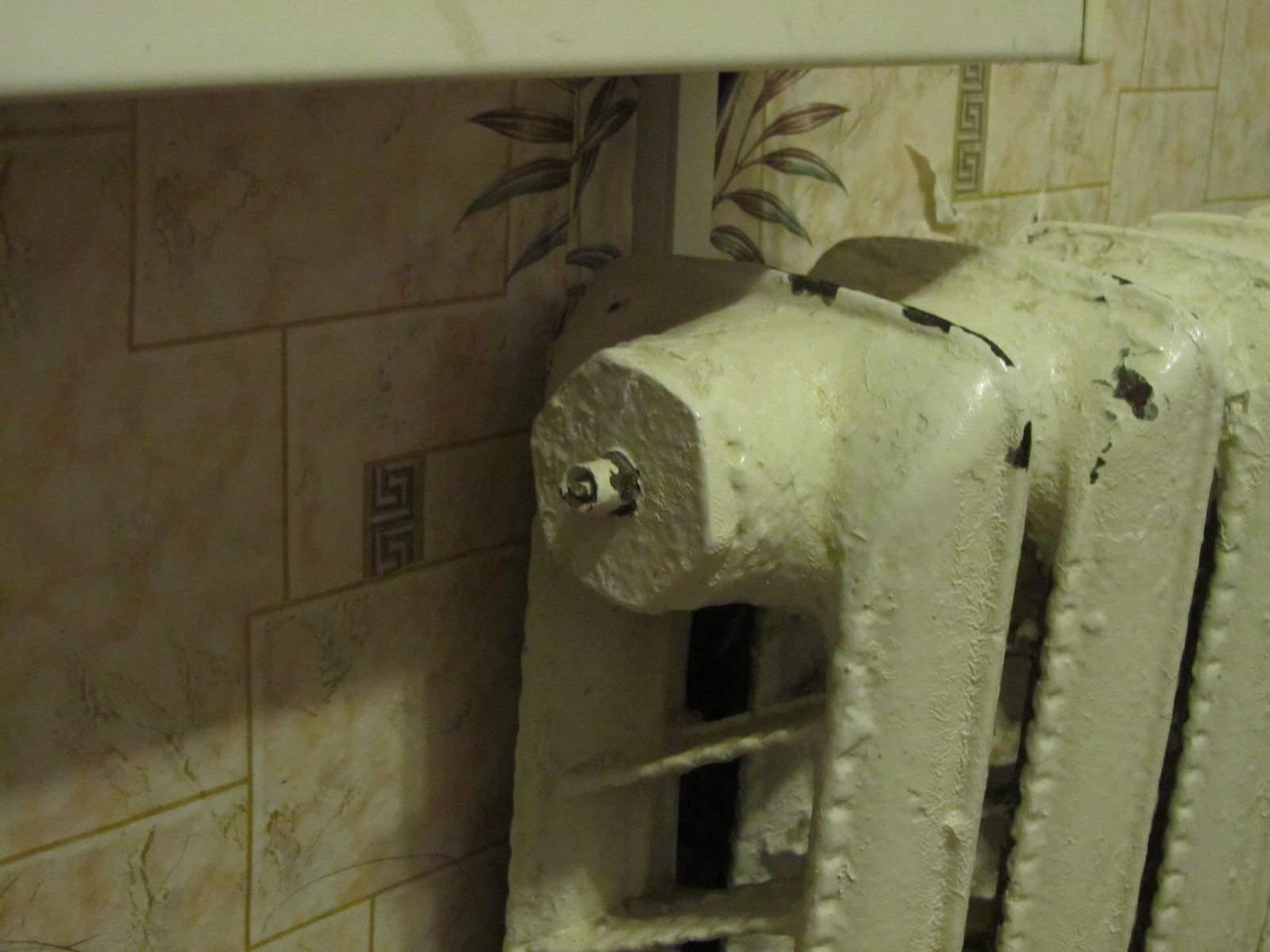
It is easy to make it by picking up a steel bar of the appropriate diameter and making a cut on its end.
Solution 3: bypassing the riser to discharge
The main problem of air vents on the lower bottling is that they are located in the apartment of the upper floor. What to do if its tenants are chronically absent from home?
Paired risers can be tried to bypass from the basement.
For this:
- We examine the stands. After the valves, vents or plugs can be installed on them. In the first case, there are no expenses, in the second, you need to purchase a ball valve with male-female threads of the same size as the plugs;
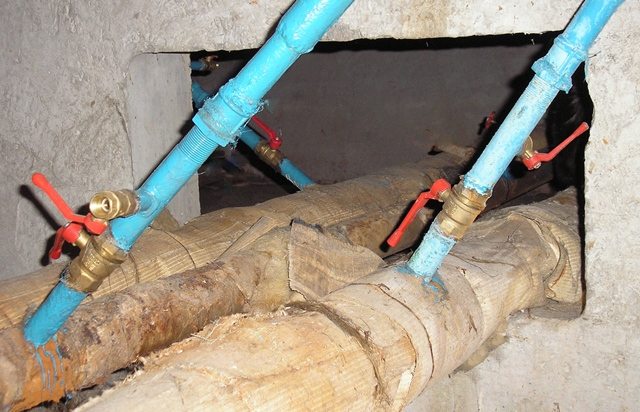
- We close the valves on both risers;
- We unscrew the plug on one of them;
After unscrewing it one or two turns, wait until the pressure of the water hitting the thread drops. So you make sure that the valves on the risers are working.
- We screw in a ball valve instead of a plug, after rewinding the thread;
- Fully open the installed reset;
- Open the valve on the second riser. After the pressure of water will expel all the air, close the vent and open the second riser.
There are subtleties here:
- If all radiators are located on the supply riser, and the return riser is idle (without heaters), put the vent on the return line. In this case, all the air will come out guaranteed. In the presence of batteries on both paired risers, the resulting air lock can not always be driven out;
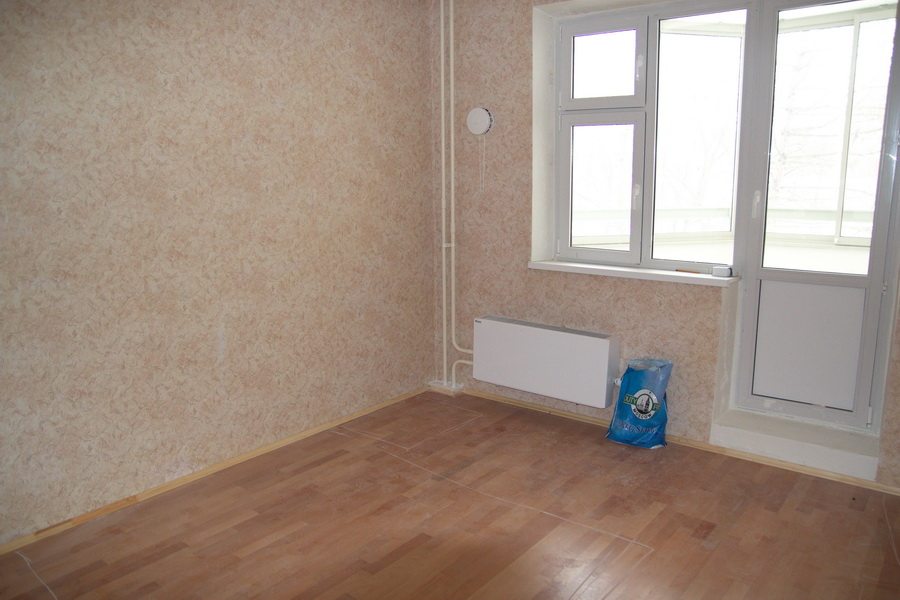
- If you failed to bypass the risers in one direction, move the bleeder to the second riser and overtake the water on the opposite side;
- If screw valves are installed on the risers, avoid the flow of water through them in the direction opposite to that indicated by the arrow on the body. Attempting to open the valve with pressure pressed against the seat by the valve is fraught with the risk of the valve being separated from the stem. To fix the problem, it is often necessary to reset the entire heating system at home.
Scenario 2: apartment building, top filling
What is a top-bottling house?
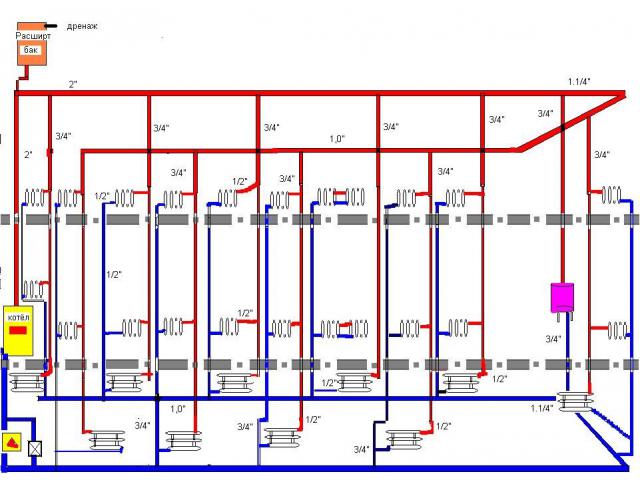
Here are its signs:
- The supply filling is located in the technical attic, the return filling is in the basement or underground;
- Each riser is a jumper between them and is turned off in two places - from below and from above;
- The feed bottling is laid with a slight slope;
- At the top point of the supply filling there is an expansion tank with a vent. Often, the discharge is led through all floors to the basement, to the elevator unit or as close as possible to it.
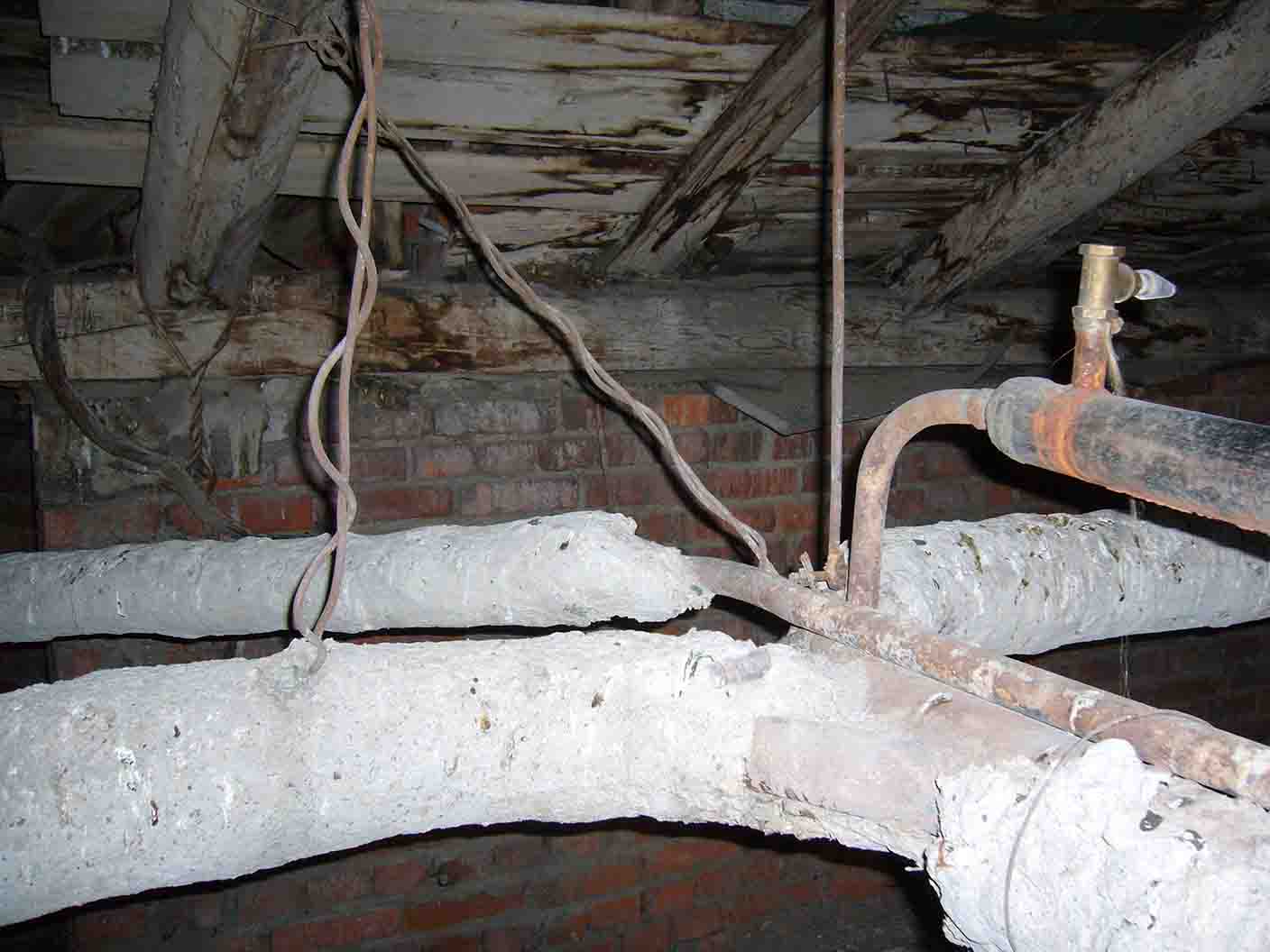
Where are the air vents located in the top filling heating system?
The function of the air vents is performed by the same vent on the expansion tank. The output of the discharge to the basement simplifies the start of heating at the beginning of the season, but even without it, it is not difficult.
Solution 4: Expansion tank bleeder
Here is the instruction for bringing the top filling system into working condition:
- Slowly (to avoid water hammer) fill the heating system by slightly opening the house valve (between the elevator unit and the heating circuit) on the supply or return;
- When the heating system is full, fully open the second valve;
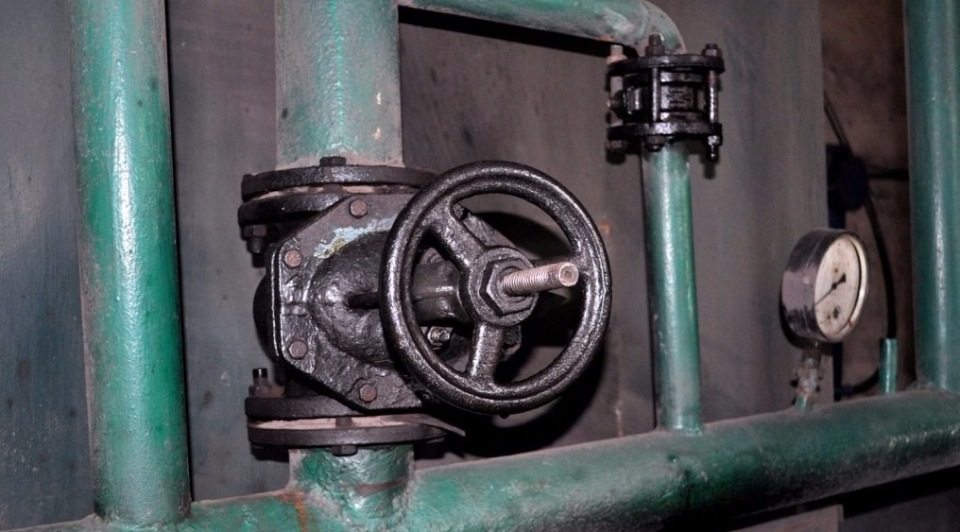
- After 5-10 minutes, open the vent on the expansion tank and wait until water comes out of it instead of air.
Scenario 3: open heating system of a single-family house
An open system operates at a pressure corresponding to the height of the water column between the lower and upper points of the circuit.
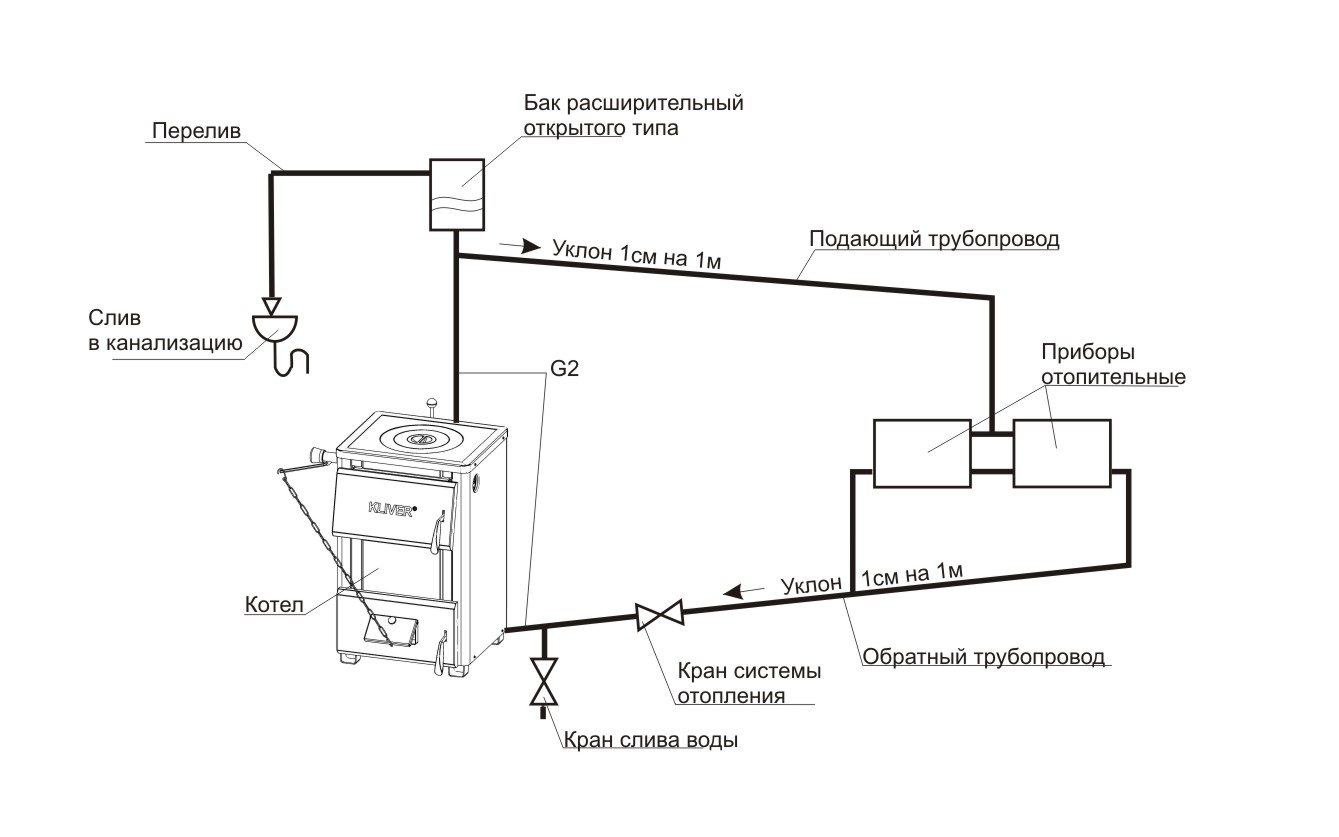
The filling is laid with a constant slope, and an open expansion tank is mounted at its upper point.
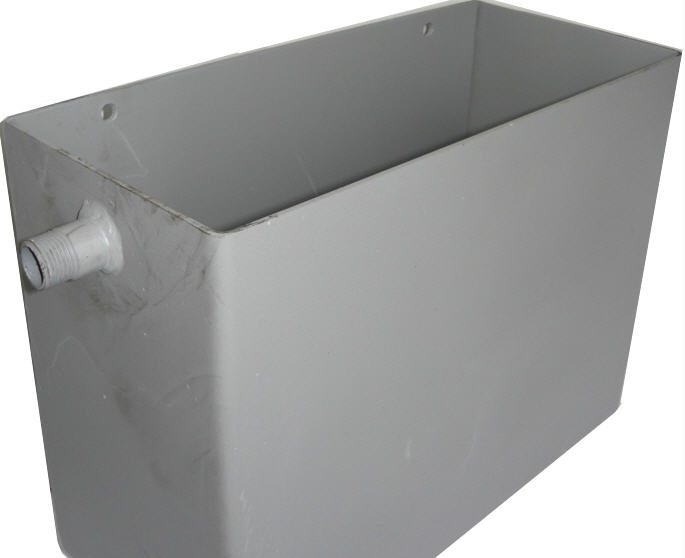
It combines several functions at once:
- The expansion tank itself, which compensates for the increase in the volume of the coolant during heating;
- A safety valve that relieves excess pressure when the coolant boils in the boiler heat exchanger;
- Airman. All air is displaced to the upper part of the circuit, into the expansion tank and further into the atmosphere.
Obviously, such a scheme needs additional air vents like an umbrella for a fish. However, they can be equipped with separate heating radiators installed above the filling: Mayevsky taps will allow you to remove air from the radiator and force water to circulate through both of its collectors.
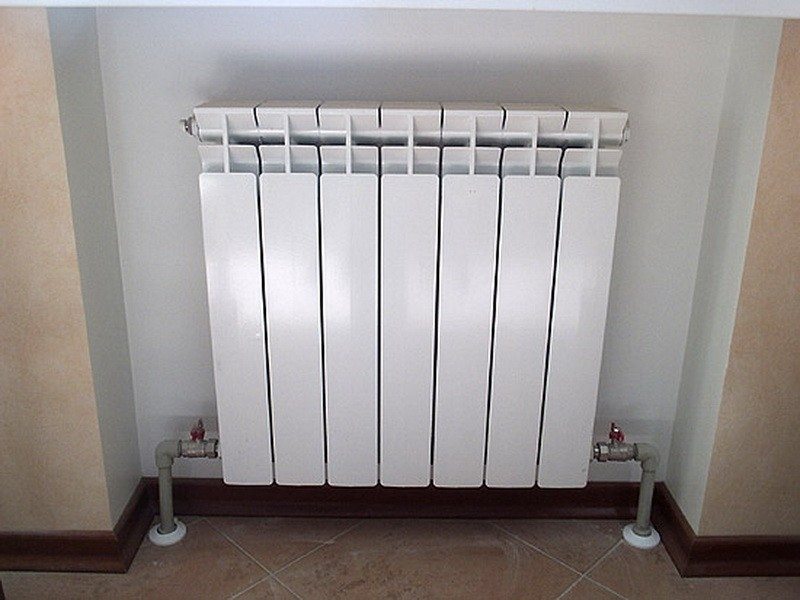
Scenario 4: closed heating system of a single-family house
In a circuit with forced circulation operating at excess pressure, an automatic air vent is usually mounted. It is part of the boiler safety group and is installed at the outlet of its heat exchanger.
Some boilers are equipped with their own safety group located inside the body.
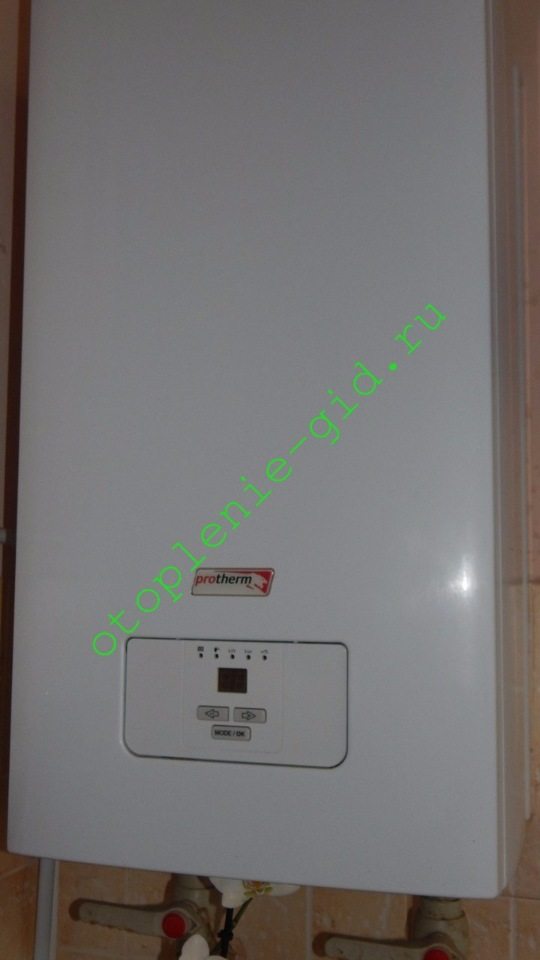
In the photo - a boiler, in the body of which a safety group and an expansion tank are mounted.
All heaters located above the fillings are additionally equipped with their own automatic air vents or Mayevsky taps.
An air vent is absolutely necessary only when the radiator is connected sideways or diagonally. Double-sided bottom connection allows operation of an air battery. Air is displaced into the upper collector, water circulates through the lower one, the sections are heated over the entire height due to the thermal conductivity of the metal.
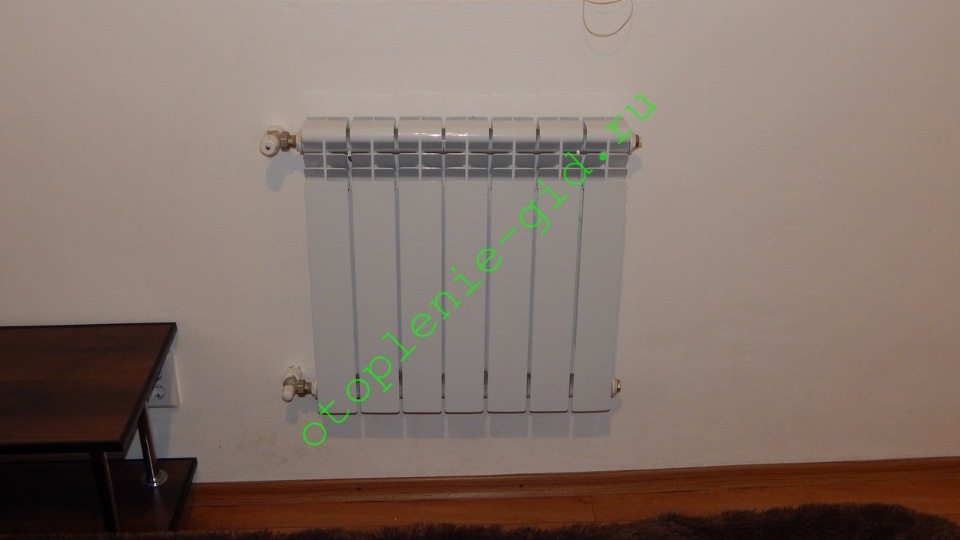
A special case
Along with the air vent in closed autonomous systems, another device is used - an air separator for heating. Its function is to remove small air bubbles that saturate the coolant and promote corrosion of steel pipes, erosion of the impeller of the circulation pump and the boiler heat exchanger.
The removal of air from the air chamber of the separator is carried out by our old friend - an automatic air vent.
The following may be responsible for collecting air bubbles:
- The so-called PALLs are rings;
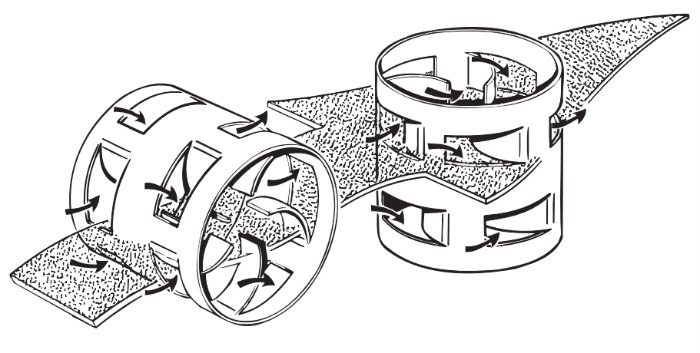
- Grids made of stainless steel or copper.
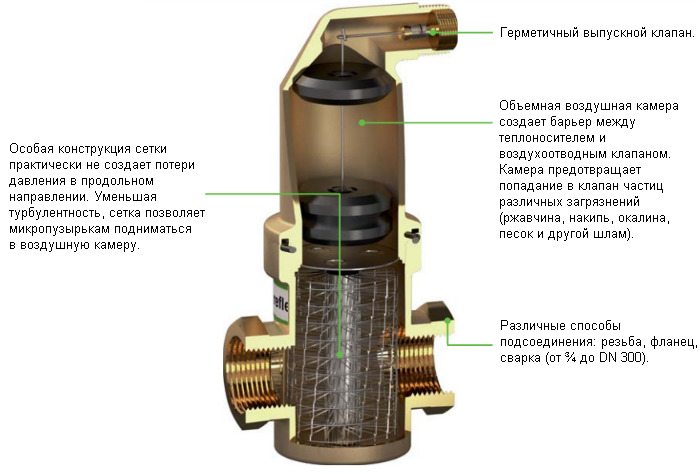
The price of the most affordable separators for the diameter of the connected pipeline of 20 mm starts at about 2000 rubles, and the benefits they bring are rather doubtful. In my opinion, in an autonomous heating system, it is quite possible to do without these devices.
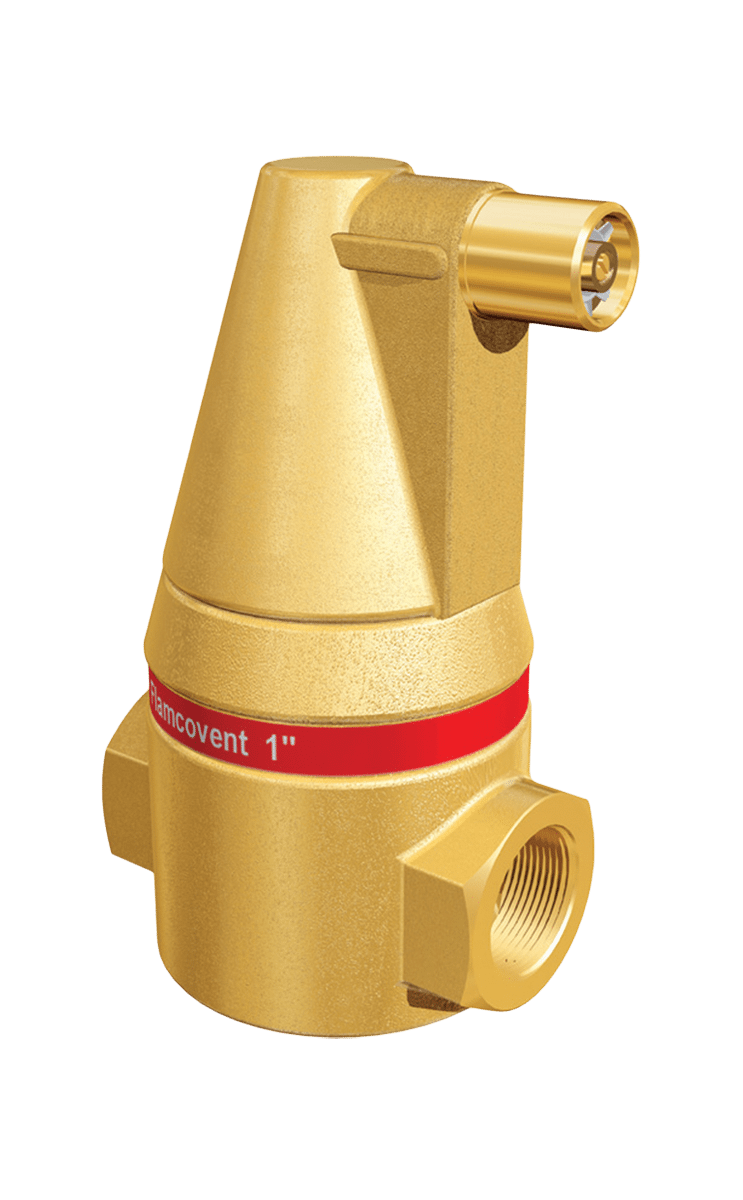
Flamcovent separator for 1" pipeline. Retail price - 5550 rubles.
Conclusion
So, we have successfully studied the causes of air jams and ways to remove air from the heating system. As usual, the reader will find additional information in the video in this article. I look forward to your comments. Good luck, comrades!


